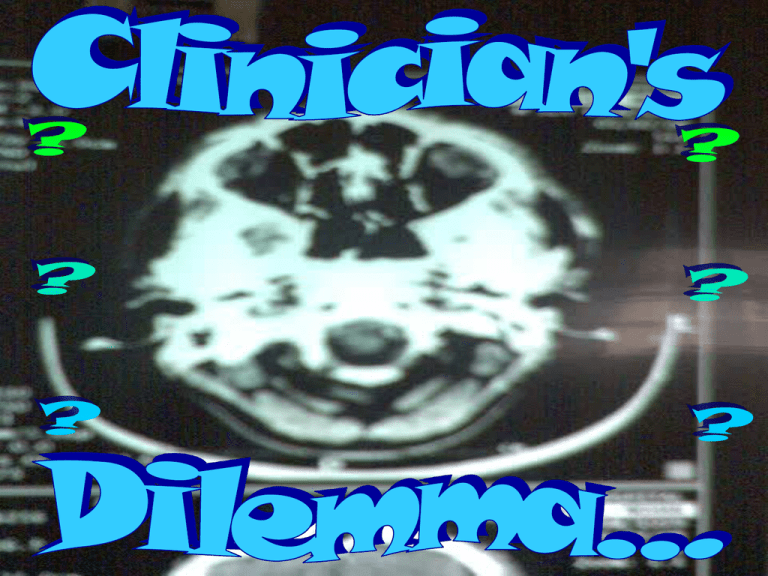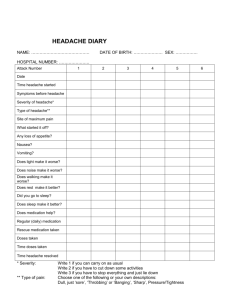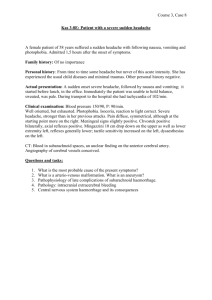Document 11981859
advertisement

We have listened to people who use ‘Good Medical Practice’ in their work - doctors in practice, NHS managers, patient representative groups and others. The new edition, refined in the light of their views, includes: emphasis on maintaining good medical practice through personal, professional development, audit and appraisal the duties of medical teachers the importance of effective team working the doctor’s duty to tell patients if things go wrong, apologize where necessary, and put things right if possible more emphasis on reporting dysfunctional practice. CASE 1 Mrs H.G. 54 years old • Developed sudden onset of severe headache, vomiting, neck stiffness in September ’07 • Following day drooping of left eyelid was noted CASE 1 • Attended Moka Eye Hospital • Ct scan brain done 2 days later at JNH • Discharged and prescribed eye drops and parentrovite injection • Headache persisted together with drooping eyelid • Attended VH in October ’07 • Findings: left 3rd cranial nerve palsy • Referred to medical unit CASE 1 • Further CT brain requested at JNH reported as having small lacunar infarcts • Patient seen by 2 specialists (physicians) and was about to be discharged home • INTERVENTIONS FROM HIGHER QUARTERS CASE 2 Mr B.C. 44 years old • H/o headache, irritability, confusion and personality change since 3 months • Recently developed urinary incontinence • Attended hospital • Given symptomatic treatment • Condition worsening and patient taken to psychiatrist CASE 2 • CT scan brain: huge bifrontal tumour • Operation in May ’07 • Right-sided tumour removed and divided into two halves • Report 19/05/07 from private lab: Appearance consistent with meningioma • Report 18/06/07 from VH: Metastatic undifferentiated carcinoma CASE 2 • Four blocks submitted for counter examination Durban, South Africa • Report July ’07: Meningoma; no abnormal mitosis, no cytological evidence of malignancy • Subsequent report from VH lab August ’07: Cellular malignant neoplasm of meningeal origin Frequent mitoses and foci of necrosis Nuclear polymorphism conspicuous CASE 2 • Is it a meningioma with no mitotic activity requiring no further treatment? • Is it a metastatic undifferentiated carcinoma (to look for primary)? Radiotherapy? Chemotherapy? • Is it a meningioma? Aggressive, anaplastic type, requiring radiotherapy? CASE 3 Mr R.Y. 43 years old • Airline pilot, referred from Seychelles • Medical report stating that he had a brain tumour on CT scan • No CT scan films sent with patient • Presenting symptoms: Sudden onset of headache, vomiting, collapse and urinary incontinence one week earlier CASE 3 • On examination: Patient conscious Headache ++ Neck stiffness Provisional diagnosis of sub- arachnoid hemorrhage MRI and MRA brain requestedReport: Normal study • What next? CASE 4 Mr I.C. 67 years old • Collapsed in bathroom • Unconscious; brought by SAMU to hospital • Admitted to Cardiac Unit with diagnosis of CVA • CT scan brain showed extensive subarachnoid hemorrhage • Transferred to ICU and put on ventilator CASE 4 • Gradual improvement in clinical condition, from grade IV to grade I • Extubated and transferred to private clinic for CT Angio • Result: No evidence of aneurysm or AVM • What next?



